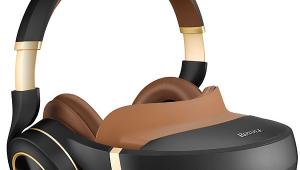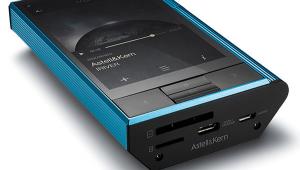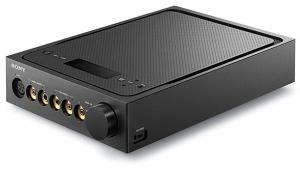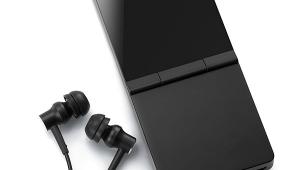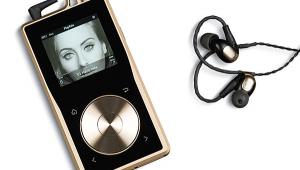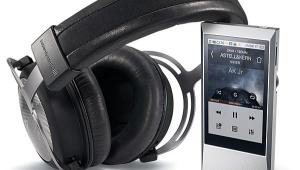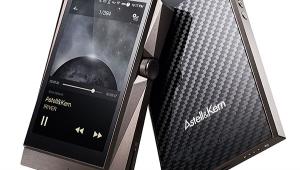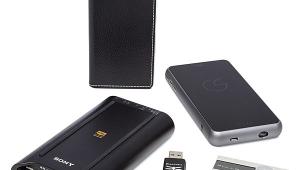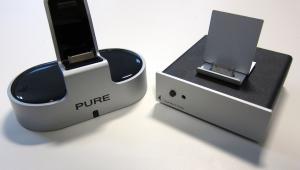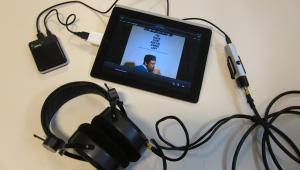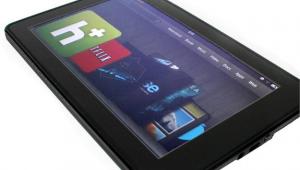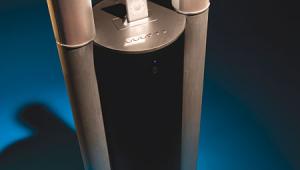Is there a high-res music player for the rest of us (i.e. under $500)?
Astell & Kern AK240 Music Player

AT A GLANCE
Plus
Native DSD decoding
Superb sound
Elegant styling
Minus
Jaw-droppingly expensive
Bulky form factor
THE VERDICT
If you’re willing to pay big bucks for a portable music player, Astell & Kern’s AK240 delivers state-of-the-art sound with the big plus of unfaked DSD decoding.
Yes, this portable music player costs $2,500. That would buy you 10 Apple iPod classics. Let the gush of hate mail begin.
Look, if it’s a choice between buying this product or, say, paying the rent, or fixing your car, or otherwise keeping the wolf from the door, I’d advise you to attend to the essentials. I know what it’s like to live within limits. But if you have golden ears and cash to burn, then be aware that the Astell & Kern AK240 bids to become the prince of performance among portable music devices.
This is the company’s third music player. Their first model, the AK100, was reviewed here in November 2013 (also available at soundandvision.com). What makes the AK240 different? It is larger, costs more, is Wi-Fi capable, supports a balanced headphone connection, and is the first A&K player to include native DSD support. The in-between model, the AK120, also reads DSD files but converts them to PCM before the final conversion to analog. The AK240 combines its main CPU with a dedicated chip that keeps DSD signals pure until they pass through the Cirrus Logic CS4398 dual digital-to-analog converters and into your headphones.
The AK240 aims to be the best DSD-capable portable player on the market—but why bother? What’s the big deal about DSD? Direct Stream Digital is a lossless format developed by Sony and Philips, originally for archival purposes, though it later reached consumers on the Super Audio CD. Traditional PCM (Pulse Code Modulation) digital audio uses a sophisticated scheme to encode the amplitude of the incoming analog audio signal, most typically using values attainable with 16 or 24 bits, captured at 44,100 to 48,000 times per second. By comparison, DSD switches a single bit on and off 2.8 million times per second, creating a single train of pulses that represents the original analog waveform. (For you techies, this technique is often referred to as PDM or Pulse Density Modulation.)
DSD advocates say it has a smoother, warmer, more analog-like sound than PCM. Skeptics disagree and say 96-kilohertz/24-bit or 192/24-capable PCM formats such as FLAC are as good as human ears will ever need (and then some). There are also some über-skeptics who claim that 16-bit CD-quality audio is indistinguishable from high-res formats of any sort. But now that digital storage capacity is cheap, why wouldn’t you want your listening experience to begin with the best possible material? Wouldn’t you like to hear what the artist heard in the studio?
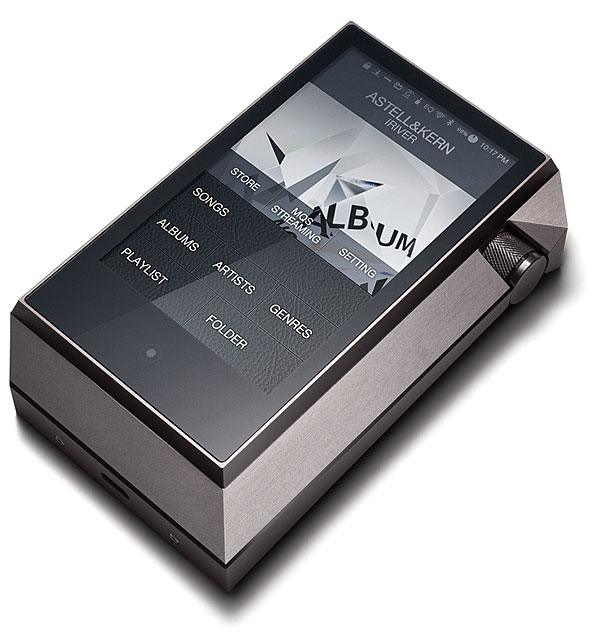
Minor caveat: Because PCM is far better established in studio tools, much DSD material has passed through PCM conversion along the way, though there do exist pure DSD recordings and pure DSD conversions from analog. The PCM-based formats are better represented among download services such as HDtracks, but DSD downloads are becoming available from dot-coms such as Acoustic Sounds (SuperHiRez.com), Blue Coast Records, Channel Classics, and ProStudio-Masters.
Big Box O’ Tech
About the size of a cigarette pack, the AK240 has a geometrically complex shape, with step-down angles on two sides that hint at a shadow effect. The heavy casing is carved out of Duralumin, an aircraft-grade aluminum alloy. If you use the “charcoal-olive” leather case, you might miss the 3D-like pattern on the carbon-fiber back panel—though the case has tactile charms of its own.
The textured, cylindrical volume knob at right is an improvement over that of the AK100 and steps up and down in increments of 0.5 (from 0 to 75). For faster and larger adjustments, just click the knob and then swipe a thumb up or down the 1.75 x 3-inch, 480 x 800 color touchscreen. Connectivity includes a headphone minijack, which doubles as an optical digital output, and a second jack that supports balanced headphone connections (only when used with compatible headphones) or balanced line output when the two ports are used together with a custom cable.
A micro-USB port for charging and file transfer is on the bottom. Once connected, just drag-and-drop files using your Windows or Mac computer. The USB port doubles as a DAC input, playing files stored on (and initiated from) your computer. The device can also connect to a home network (802.11 b/g/n, 2.4 gigahertz) to stream or download from a computer running A&K’s MQS Streaming Server software. I streamed MP3s from a room adjoining the router location, with a middling-strength Wi-Fi connection, though high-res PCM files needed more than my Wi-Fi could muster. DSD files are supposed to stream but didn’t for me; Astell & Kern says a firmware update rolled out after my evaluation corrects this.
To supplement the internal storage of 256 gigabytes, there’s a slot for microSD cards up to 128 GB. If you max out the storage, the player will hold approximately 4,000 songs at a file size of 90 MB per song (assuming a four-minute song at 96/24 resolution). That would be 400 albums at 10 songs per album. The best choices among file formats would be lossless varieties, such as DSD, FLAC, WAV, AIFF, or Apple’s ALAC. Using lossy file formats could increase the breadth of your portable library but at the expense of sound quality—and sound quality is the whole rationale for this pricey and bulky product.
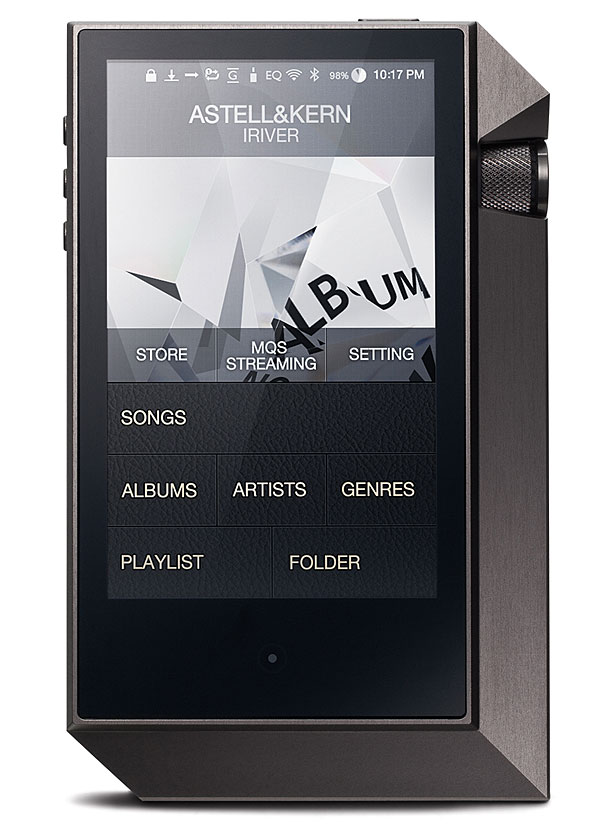
The AK240 takes 25 seconds to boot up (10 seconds longer than the AK100), runs about 10 hours per charge, and takes several hours to charge from my computer USB connection. This time can be reduced by half or more by using a common 2-amp USB charger, the company says, but, sadly (given the player’s price), they don’t supply one.
The user interface allows navigation by metadata (artist, album, song, etc.) or by folders and files. The latter can be helpful when you haven’t got your metaducks in a row. When the AK240 is playing, the top of the screen shows album art. Just beneath is resolution (96/24, etc.) in small print, followed by track and artist names in larger print and large navigation icons. Regrettably, the now-playing screen doesn’t list album title or file format. An invisible home button is in the center of a half-inch black bar at the bottom.
To avoid reliance on a single headphone model, I did all my listening with both an original Austrian-made AKG K240 and a new Sennheiser HD600 (and sporadically a few others). The AKG’s top end is more revealing (or sometimes abrasive), while the Sennheiser is more polite (or sometimes vague). At least that’s what I thought until I listened to Tchaikovsky’s “Waltz of the Flowers” (Bernhard Klee, Bruckner Orchester Linz, FLAC 96/24). To my surprise, it was the Sennheiser that gave the chiming triangle a stronger ring. Although the AKG’s upper midrange was more pronounced, the Sennheiser was clearly the high-frequency extension champ. Both headphones, especially the AKG, required high volume settings. But the player’s headphone amp sounded clean and unlabored right up to the top of its range.
DSD vs. PCM
A key question was how DSD would stack up against the various PCM formats. I have Big Brother & the Holding Company’s Cheap Thrills in both DSD (from Acoustic Sounds) and FLAC 176.4 /24 (from HDtracks), and I spent the better part of an afternoon A/B-ing the song “Summertime.” While the differences were subtle, there were several of them. DSD had the advantage in overall comfort and the three-dimensionality of Janis Joplin’s voice. Its tonal balance was a closer relation to my experience with the LP, for better or worse. The second (and louder) acid-rock guitar solo had more sting in FLAC. When I inquired about the source material of both downloads, the only thing I could discover was that the DSD files were sourced from the SACD master.
This was my first attempt to compare DSD and PCM (it won’t be my last), and it’s merely suggestive—not definitive. Future experiences may lead to different conclusions. If you’ve already invested in high-res PCM downloads, stop worrying which is marginally better and enjoy them all.
Several other albums in DSD offered their own distinctive pleasures. In Ali Akbar Khan’s Indian Architecture, it was the metallic mist of sitar and the bassy swoop of tabla, both spectacularly well resolved. In Billie Holiday’s Lady in Satin, it was the heart-wrenchingly natural definition of the melancholy voice. At times, in Jeff Beck’s Blow by Blow, I loved what the DSD file did for the leader’s electric guitar and Max Middleton’s ping-ponging electric piano, but I wasn’t sure it was much of an aesthetic improvement over the sound of the LP, which was warmer and less bright (at least with my analog rig).
Next, I moved to the opposite extreme, and the AK240 sounded good even with lossy MP3s (ripped from CD at 192 kilobits per second). No, it didn’t make the ill effects of lossy data reduction go away, but it did avoid exacerbating them with the distortion I hear when I use the AKG and the Sennheiser with an iPod nano and its internal flea-sized amplifier. With “My Enemy” from Richard Thompson’s Electric, “Dirty “Blvd.” from Lou Reed’s New York, “Take a Pebble” from Emerson, Lake & Palmer’s self-titled debut, and “I’m Not the Same Without You” from Donald Fagen’s Sunken Condos, voices were always transfixingly fleshy and real.
With the same tracks ripped from CD to Apple Lossless, the mids and highs gained in refinement and lost their faintly hard edges. The player was truthful about bass (a little phat on the AKG, more disciplined on the Sennheiser) and treble (cymbals were slightly more vibrant on the AKG than on the Sennheiser). If you want insights into the true character of your headphones, the A&K strikes me as a reliable guide.
One of the older AK100’s shortcomings was the quality of its Bluetooth connection. The AK240’s connection avoided the hiss and glitches of the earlier model, though, not surprisingly, the voicing was thin compared with the full-bodied sound from its wired headphone jack. To be fair, Bluetooth is offered more as a convenience here, A&K says, since the connection neither uses the AK240’s high-end DAC nor offers the bandwidth to deliver the full information of high-res files. In a neat twist, the AK240 streamed files via Bluetooth to my Pioneer VSX-53 A/V receiver not only from its own internal memory but also from a network-connected PC, serving as wireless intermediary between PC and receiver. Very clever!
Is Astell & Kern’s AK240 worth 10 iPod classics? For most readers, the question is academic (and probably irritating). But this is the best portable audio player I’ve enjoyed to date, with unassailable build quality, sweet aesthetics, not-half-bad ergonomics, and stupendous sound, including the special attraction of uncompromised DSD playback. It’s also remarkably versatile, with Wi-Fi connectivity for file transfer and streaming from computers, Bluetooth to reach your main system or wireless speakers, and the USB DAC feature for wired computer playback.
Be warned that I haven’t yet tried less costly DSD-capable players such as the HiFiMAN HM-901 or FiiO X5—so my enthusiasm for mobile DSD might conceivably find a lower-priced target. But is the AK240 a fabulous product that brings endless fun and pleasure? An emphatic yes. I loved the little thing to death.
OK, pile on.
- Log in or register to post comments


